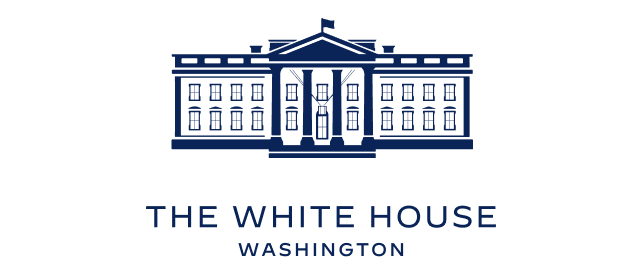President Biden and Vice President Harris are delivering on their commitment to lower costs for American families. Through the historic legislation signed into law by President Biden (ARP, IRA, BIL), Americans are experiencing lower health care, home heating, and high-speed internet costs – affecting tens of millions of seniors, students, and families month-over-month. This week alone, the Biden Administration is announcing key actions to help blunt the impacts of inflation on American households and give families more breathing room.
Lowering health care and prescription drug costs: The Department of Health and Human Services released new data showing that over 3.4 million seniors and people with disabilities are likely to save an average of $70 per year because of the Inflation Reduction Act’s provision that went into effect in January that allows Medicare beneficiaries to get recommended vaccines for free. HHS also announced that producers of 27 drugs – or 9% of all Medicare Part B drugs – will need to pay rebates back to Medicare because they raised their prices faster than inflation. This provision of the Inflation Reduction Act is putting a critical check on drug companies that try to excessively raise their prices and squeeze American seniors. And, some Medicare beneficiaries that take these drugs will save between $2 to $390 per dose of medication starting in April.
Lowering high-speed internet costs: The Federal Communication Commission released additional funds to support the Affordable Connectivity Program, a program that is delivering affordable high-speed internet to over 16 million households, saving American families over $500 million per month. Last week, the FCC released a tranche of $66 million to help more people access the program, funded by the Bipartisan Infrastructure Law.
Lowering home energy costs: This week, HHS released over a half a billion dollars in LIHEAP funds to states to cover American families’ home heating costs. President Biden and Vice President Harris have significantly increased funding for the LIHEAP program, including $500 million in the Bipartisan Infrastructure Law and $4.5 billion in ARPA to give Americans breathing room on their winter heating bills. Over the past year, LIHEAP has helped more than 5.3 million households on heating and cooling bills, and on weatherization services.
Fact Sheet on President Biden's Prescription Drug Law Saving Millions
State by State Vaccine Savings
State by State Insulin Savings
President Biden Announces New Actions to Reduce Gun Violence and Make Our Communities Safer
This week, in Monterey Park, California, President Biden announced an Executive Order with the goal of increasing the number of background checks conducted before firearm sales, moving the U.S. as close to universal background checks as possible without additional legislation. The Executive Order will also keep more guns out of dangerous hands by increasing the effective use of “red flag” laws, strengthen efforts to hold the gun industry accountable, and accelerate law enforcement efforts to identify and apprehend the shooters menacing our communities. President Biden also encouraged the Federal Trade Commission to issue a public report analyzing how gun manufacturers market firearms to minors.
President Biden traveled to Monterey Park to grieve with the families and community impacted by the mass shooting that claimed 11 lives and injured nine others in January. Monterey Park is part of a growing list of communities all across the country that are forever changed due to gun violence—not only mass shootings, but also daily acts of gun violence that may not make national headlines.
Fact Sheet on President Biden's Actions to Reduce Gun violence and Make Our Communities Safer
The Biden-Harris Administration Announces New Actions to Lower High-Speed Internet Costs
This week, the Biden-Harris Administration announced new funding to lower the cost of high-speed internet, releasing $73 million in Affordable Connectivity Outreach Grants to help more Americans sign up for the Affordable Connectivity Program and save on monthly internet costs.
In the 21st century, affordable, reliable high-speed internet is key to opportunity – to access education, healthcare, work, precision agriculture and keep in touch with loved ones. Still, too many are left without high-speed internet because they lack the infrastructure, or are inhibited by high costs or lack of technological skills. In particular, these inequities impact communities of color, rural communities and older Americans where the lack of affordable, reliable high-speed internet contributes to significant economic, health and other disparities.
Already, 16.75 million households are saving over $500 million per month on high-speed internet through the Affordable Connectivity Program. Now, the Biden-Harris Administration is releasing an additional $73 million in Affordable Connectivity Outreach Grants to help more Americans sign up for the program and save on internet costs. These investments include:
$66 million in the Affordable Connectivity Outreach Program to drive awareness and enrollment in the country’s newest and largest broadband affordability program in the nation’s history. Building on its current community partnerships, the FCC is providing financial support to partner organizations nationwide to serve as trusted community messengers for the Affordable Connectivity Program and equip them with funding to pursue innovative outreach strategies to reach historically underserved communities, including money set aside for outreach to households on Tribal lands. The FCC selected 197 applicants representing 50 states and territories to pursue a broad range of outreach projects to promote the Affordable Connectivity Program. Partner organizations will now be able to use grant funds to conduct digital campaigns, door-to-door canvassing, operate phone banks, distribute direct mail, and host ACP application enrollment and outreach events. Of the 197 applicants selected for funding, 177 represent governmental and non-governmental entities from the National Competitive Outreach Program (NCOP), with $60 million in funding. The remaining 20 represent governmental and non-governmental funding recipients from the Tribal Competitive Outreach Program (TCOP), which is providing over $6 million in funding for ACP outreach and enrollment support targeting eligible households that live on qualifying Tribal lands.
Fact Sheet on the Biden-Harris Administration's New Actions to Lower High-Speed Internet Costs





